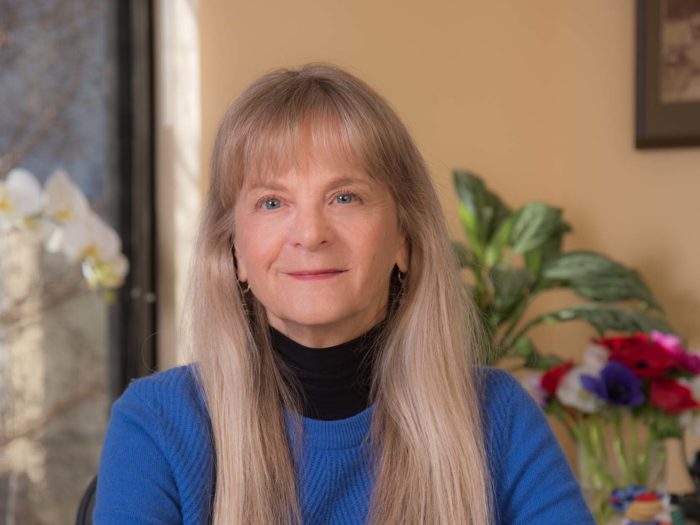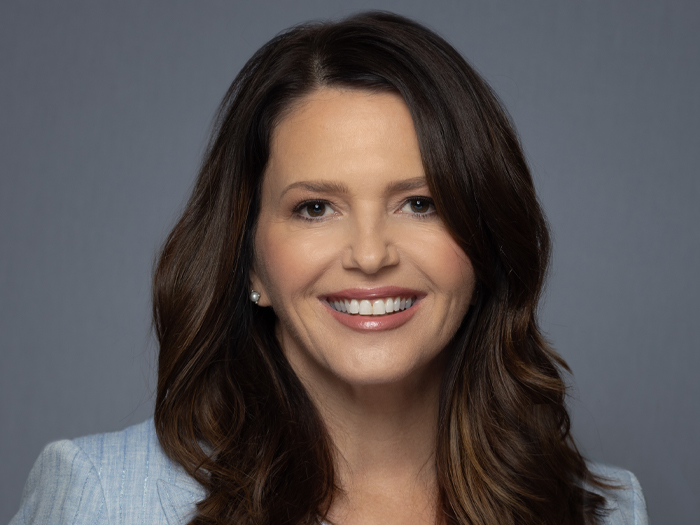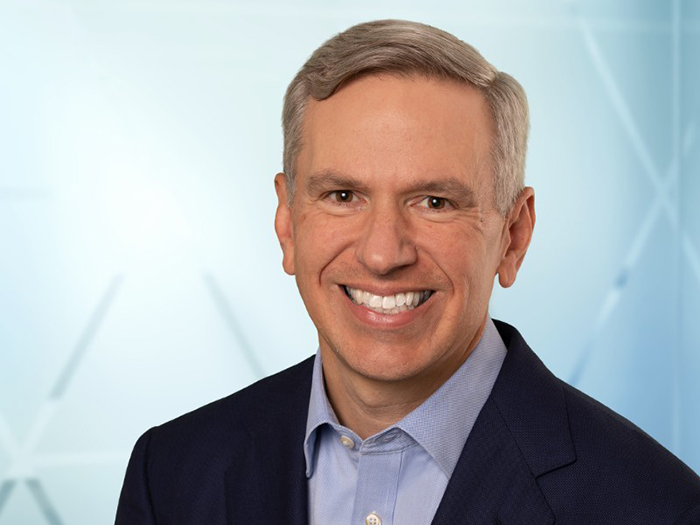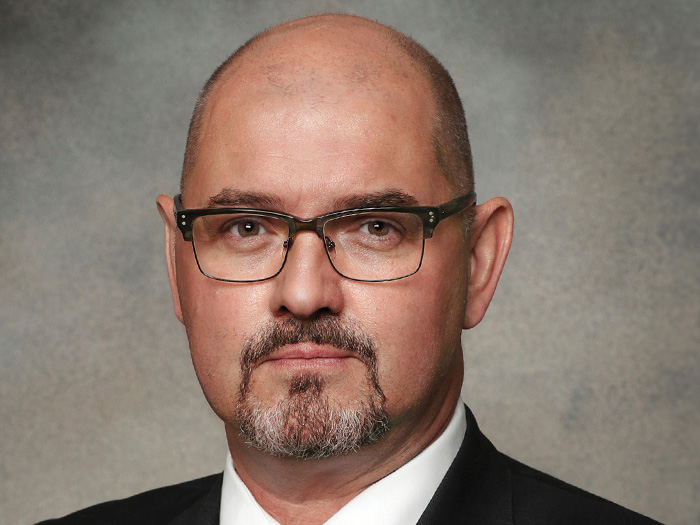19 Questions for Pamela Davis, CEO of Nonprofits Insurance Alliance

Pamela Davis was a UC Berkeley graduate student when she experienced first-hand how difficult it was for nonprofit organizations to obtain insurance.
Taking matters into her own hands, Davis decided to pave a path for these organizations to receive adequate coverage so that they could continue to fulfill their missions, while merely living to see another day.
Without her company, Nonprofits Insurance Alliance, many of these nonprofits would be unable to serve their respected communities.
Davis sat down with Risk & Insurance® editor-in-chief Dan Reynolds to discuss the origins of Nonprofits Insurance Alliance and where it stands today.
Risk & Insurance: Great to meet you, Pamela. How did you get involved in the insurance for nonprofit sector? Share a little bit about your background if you don’t mind.
Pamela Davis: I’ll try to be brief on this, although it’s an unusual experience. It really was about 35 years ago, and I was at the time a graduate student in the public policy program at UC Berkeley.
I wrote my thesis all on the difficulties that nonprofits were having finding insurance, very similar to the market that we’re having now.
The nonprofits were having just a terrible time trying to get the coverage that they needed, mostly liability, and the insurance industry back then said something like what we’re hearing now.
They said, “It’s social inflation,” and that was the reasoning that they gave.
I hadn’t worked in the insurance industry before; I actually, seriously started out in the insurance industry as my first job being CEO of this insurer.
R&I: You founded the company?
PD: I did.
R&I: So, you were writing a thesis on the lack of capacity, but how did you pull that all together?
PD: I was actually a returning student. I was in my thirties by then, because I hadn’t a chance to finish my degree. But I raised money from the Ford Foundation and several other foundations.
I raised a million dollars in low interest loans, and that was our capital. Then I raised about $300,000 for putting the actuarial work together and the legal work together for the company.
When we started, the day we started, I had $40,000 left in the bank and a million dollars that I could not touch, because it was only for claims that could be paid.
R&I: That’s amazing that you wrote your thesis, got the funding, and started it all up. When did you actually found it then? What year?
PD: We started in 1989.
R&I: Over the years, can you talk to us about chapters or eras where there were capacity constrictions in the market, if any?
PD: I would say in the first 10 years, we were just based in California then, and we focused on the smaller nonprofits. They had a great need because the small community base could not get insurance anywhere else. We grew steadily.
I then launched an additional company, a risk retention group, Alliance of Nonprofits for Insurance. That was for nonprofits outside of California.
We also have a captive that reinsures for property and a service group that houses all the staff. This is very unusual, but it’s also important about how we operate.
We are all 501(c)(3) organizations ourselves, so we’re very unusual that way. I actually pursued Congress and got the law changed to allow us to be a (c)(3) nonprofit, because I felt very strongly that we should be accountable to the nonprofits that we insure.
R&I: And what year did you form the risk retention group?
PD: It was 2000, but 2001 was when we officially launched. And it has grown steadily. Both companies have grown steadily, but I’ll tell you, the last three years have been dramatic. We’ve grown by 50% in the last three years.
R&I: Amazing. Before we get to that, keeping that in mind, you have a risk retention group. But you also have a captive that you mentioned, right?
PD: Yes, we have a captive that reinsures for property.
R&I: What year was that formed?
PD: Same year, 2000.
R&I: So, over the years, have there been circumstances where losses or claims or just market cycles, that the organization itself was in crisis? You had to get over a certain hump?
PD: No, we have been growing steadily. We have always been able to get whatever reinsurance we wanted or needed — and not to say that the growth was without challenges, but it was not because of the claims or losses.
As a startup, it was difficult in many ways to get larger brokers to work with us. That was a big challenge.
And I would say there was a lot of misinformation back then about alternatives, right? And the industry was not particularly welcoming of this new idea of risk retention groups. Those are the challenges, not the risks.
R&I: When you formed all this, did you have actuarial training? Were you a mathematician?
PD: I played an insurance executive on TV. No, seriously, I had never worked at all in the insurance industry.
I really felt that nonprofits were being treated unfairly by the insurance industry and was really driven by a sense of unfairness, because they have to have insurance. They can’t do their work without insurance, and the source of insurance was saying, “We don’t think you’re insurable.”
R&I: Can you say how much of your book you do reinsure at this point?
PD: We spend about 25% of our premium on reinsurance. We have both quota share and excess of loss. We have about 17 reinsurers.
R&I: And are you comfortable saying which of those have been particularly supportive over the years?
PD: Yes, I am. Swiss Re, Hanover, Gen Re in the early years. We don’t use Gen Re too much right now, but in the early years, they were very supportive. Then R+V has been very helpful, which is a German company.
R&I: Terrific. Are you able to say what nonprofits you do work with that we might know, any household names?
PD: Sure. In fact, I think that’s a really interesting question, because we do work with some organizations that are more household name, like Boys and Girls Clubs and Goodwill.
But the real thing to know is that the household names, like the American Cancer Society or the American Diabetes Association, don’t need us. They have friends in the insurance industry who do that sort of thing.
It’s the community-based organizations that are doing work under most people’s radars except for the local communities. A lot of folks don’t really understand that the nonprofit sector is providing huge services in our communities.
For example, one of the ones we insure is Children’s Home Society of Florida. They have 1,700 employees. They are doing foster care and serving children with mental health issues across the state of Florida.
Without their ability to provide their services, it would be a huge loss. But most of your readers are never going to hear of the Children’s Home Society of Florida.
Another example would be Via Mobility Services of Colorado. They provide transportation for 3,000 people a year: people in wheelchairs, with disabilities, seniors, wheelchair lifts. They do this very well for 3,000 clients a year. Most people are not going to know the name of that nonprofit.
There’s also an organization called KidsPeace in Pennsylvania. They have almost 2,000 employees. They’re serving 8,000 kids a year and they’ve been in business since 1882, serving more than 300,000 families.
These are the types of organizations that would have trouble finding insurance without us.
R&I: Going back to the origins of this, which are before you wrote your thesis and formed the group, was there something about nonprofits that you personally felt fired up by or that you were involved with?
PD: I would say I only had a very little bit of work. I actually worked for nonprofits to work my way through college, and that’s how I was introduced to them. I didn’t know about their missions and their important work in our communities before they hired me to do some work, and that’s how I learned about the great work that they were doing.
Yet, as I was going through graduate school, the organization I had worked for was in danger of getting shut down. They were large, but they couldn’t get insurance.
R&I: That’s what sparked this whole journey?
PD: Yes. They let me know, “Wow. We’re in dire straits, and it’s because we can’t get insurance.” They knew I’d done some other work researching insurance on another project.
R&I: You mentioned some very good examples of organizations that couldn’t fulfill their mission if it wasn’t for the insurance. Are there any organizations that you’re particularly close to that you just contribute to or are involved with?
PD: There’s so many. We insure now 23,000 nonprofits. And there are so many close to my heart.
Advocacy organizations, particularly those civil justice and the environment, I’m very passionate about.
There are some of those organizations, like the land trusts and the organizations, small organizations like Save Our Shores or Save the Redwoods. They’re not necessarily hard to insure, but for me, it’s very satisfying, because I think it’s important for the work they do.
The example that is important to me, because of our impact on it, is Black Lives Matter. Their broker came to us when they had been declined by 90 insurance companies. They can’t get board members; they can’t rent facilities; they can’t hold marches if they don’t have insurance.
We insure more than 1,000 civil justice organizations. So those are important both to me personally and from a perspective of my work and what we do as an organization to support the sector.
R&I: You mentioned membership growth being pretty substantial. Can you talk to us about the pandemic? From everything I’ve read, the pandemic just wreaked havoc on nonprofits, right?
PD: Yeah. Well, they couldn’t go home and do their work from home in most cases, right?
R&I: Right.
PD: If you’re taking care of folks with disabilities or teens in a residential setting, their work just got, by orders of magnitude, more difficult. And yet they had to show up; they had to have employees show up, right?
In transportation, people still had to get around, and the transportation organizations had to continue to get people to medical appointments. The food banks had to continue to be open and transport food to people.
I would say it was made doubly difficult; many carriers chose this time to withdraw coverage. So now, you have nonprofits that are already struggling with the pandemic, and now they’re faced with having to replace their insurance in a really difficult market.
That’s why we grew by 50%. These were the organizations we insured day in and day out. There was nothing different about what we did. We just did more of it.
R&I: Are you willing to say where net premiums written sit with you, like your organization, either this year for 2021 or perhaps how they’ve been trending over the past five years?
PD: Well, this year, we expect to do about $250 million in premium.
R&I: Okay. Big organization.
PD: Yeah, and we grew from zero when we started. The first 10 years were really establishing our worth in the market. But we clearly were a key market for some of the largest brokers in these last three years. We continue to be a key market for some of their clients that could not be insured elsewhere.
R&I: Is there anything about your career, Pamela, or the history of the organization that we didn’t ask you about that you think would be important to express to our readers?
PD: I guess what I would say is that NIA is a really different model.
I think it’s important for people in the insurance industry to realize that when I first started, I had a lot of people with a lot of insurance experience telling me that we would fail, that we wouldn’t make it through a year — we wouldn’t make it through two years at the most. And that all I was doing was put a lot of nonprofits at risk.
Out of that, nonprofits actually took a really difficult problem, right? They solved it for themselves. So, I guess what I say from this, our success, we’re an AM Best A (Rated as Excellent) IX insurance group now.
I think that the industry is doing itself a disfavor when it doesn’t really allow itself to look at innovation and different models and to recognize that maybe just because we’ve been doing something for a long time that there aren’t better ways to do it.
So, I think that we are a very good example of how something that looked at first like it was not going to be a success has just been wildly successful and been essential for basic human services and community services.
R&I: Pamela, as much as the corporate world would not want to admit it, sometimes it takes a Berkeley grad to get the job done. &










